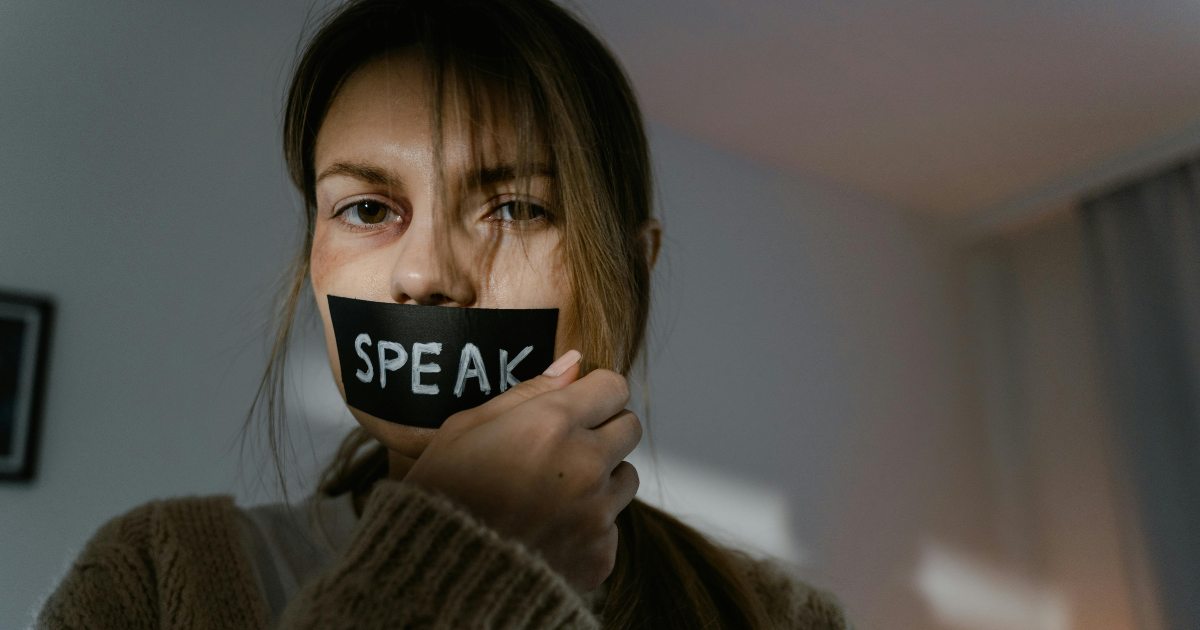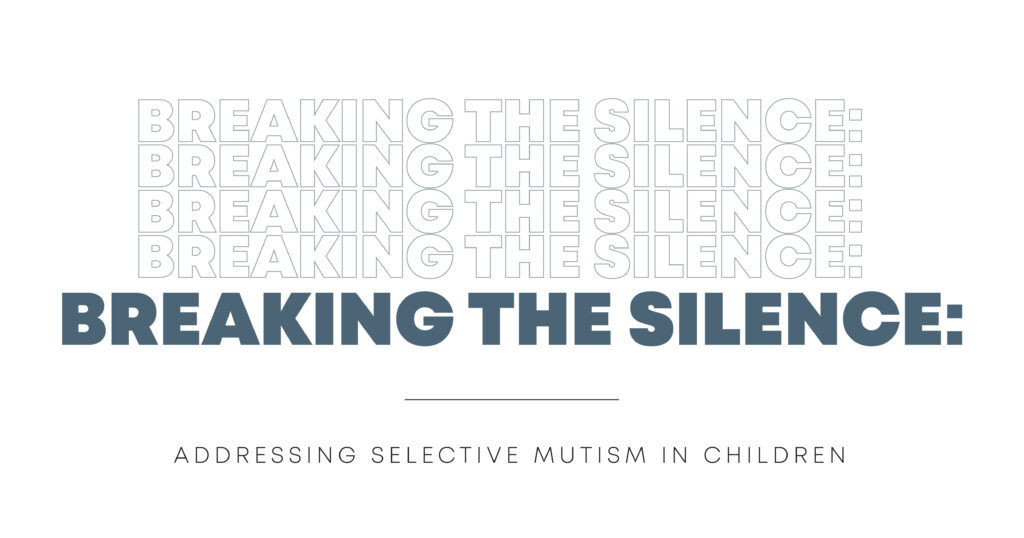It can be confusing—and heartbreaking—for parents and teachers to watch a child who speaks freely at home fall completely silent in public settings like school or social gatherings. This isn’t stubbornness or shyness. It may be selective mutism, a complex communication disorder often rooted in childhood anxiety.
Understanding selective mutism is essential for supporting children who struggle to speak in specific environments. Children can find their voices and build lasting confidence with compassionate care, structured interventions, and early support.
Understanding Selective Mutism and Its Impact on Children
Selective mutism is an anxiety-based disorder where a child who can speak in some settings is unable to speak in others—despite having the physical ability to do so. It typically appears between ages 3 and 6 and is often first noticed when a child enters school.
This condition is not a delay in development or a refusal to speak—it’s a form of social anxiety so intense that verbal communication becomes emotionally overwhelming.
Key characteristics of selective mutism include:
- Consistent inability to speak in specific settings (e.g., school or public places)
- Speaking normally at home or with familiar people
- Interference with educational, social, or emotional development
- Symptoms lasting more than one month (not limited to the first school month)

Mental Health Center of San Diego
The Connection Between Selective Mutism and Social Anxiety
Selective mutism and social anxiety are closely linked. Most children with selective mutism meet criteria for social anxiety disorder, where the fear of being judged or embarrassed becomes paralyzing.
Rather than expressing their anxiety through typical symptoms like trembling or avoidance, these children cope by staying silent, especially in unfamiliar or performance-based situations.
Common triggers include:
- Being asked to speak aloud in class
- Interacting with authority figures
- Participating in group settings
- Being the center of attention
Speech Therapy Approaches for Children with Selective Mutism
Speech therapy can play a valuable role in helping children with selective mutism, especially when paired with psychological support.
Speech-language pathologists (SLPs) focus on:
- Building comfort with verbal expression in a gradual, pressure-free manner
- Using augmentative communication techniques like whispering, writing, or gestures
- Encouraging turn-taking, eye contact, and expressive language in low-stress contexts
- Collaborating with families and schools to create supportive environments

Behavioral Therapy’s Role in Managing Anxiety in Children
Because selective mutism is rooted in anxiety in children, behavioral therapy—especially Cognitive Behavioral Therapy (CBT)—is often the frontline treatment.
CBT helps children:
- Identify what triggers their anxiety
- Develop relaxation techniques to manage physical symptoms
- Replace negative thought patterns with more balanced beliefs
- Slowly practice speaking in stages, using exposure-based methods
Enhancing Language Development in Children with Communication Disorders
Children with selective mutism may not have a speech delay, but the absence of verbal practice in social situations can impact language development, especially expressive language skills.
Combining therapeutic interventions with intentional language-building support helps strengthen overall communication.
Mental Health Center of San Diego
Early Intervention Techniques for Language Delays
The earlier a child receives help, the better their chances of success. Early intervention focuses on:
- Creating routine verbal opportunities in safe environments
- Using visual schedules to reduce anxiety around transitions
- Offering choices to encourage expressive responses
- Reading together and asking open-ended questions
- Modeling self-talk to boost vocabulary and emotional naming
Engaging Activities to Build Communication Skills
Fun and connection can be powerful motivators. Activities that reduce pressure but support communication include:
| Activity | Purpose |
| Puppet play or role-playing | Encourages indirect speech and builds confidence |
| Interactive storytelling | Builds sequencing, imagination, and expressive language |
| Art projects with narration | Combines creativity with verbal expression in a non-judgmental way |
| “Yes/No” games | Initiates verbal or non-verbal participation |
| Singing or rhyming songs | Reduces anxiety and increases comfort with vocalization |
The Importance of Mental Health Support for Children with Selective Mutism
Treating mental health in children with selective mutism goes beyond speech. It involves nurturing emotional resilience, reducing anxiety, and improving social functioning.
Professional mental health support may include:
- Child-centered therapy focused on reducing anxiety
- Parent coaching to avoid reinforcing avoidance behaviors
- School collaboration to ensure the child feels safe and understood
- Group therapy for social communication practice
- Medication, in rare cases, if anxiety symptoms are severe and impairing
Ways Parents and Educators Can Support Children with Selective Mutism
Support from home and school environments is vital. Children with selective mutism often benefit from a team approach that encourages, rather than pressures, them.
Here’s how caregivers and teachers can help:
- Avoid drawing attention to the child’s silence or forcing speech
- Provide non-verbal alternatives like writing or pointing to participate in class
- Celebrate small progress, such as whispering or nodding
- Model calm and open communication
- Establish predictable routines to reduce anxiety triggers
- Work closely with therapists to reinforce strategies across settings
Support Self-Discovery—Guidance for Children at Mental Health Center of San Diego
At Mental Health Center of San Diego, we specialize in treating childhood anxiety and communication disorders like selective mutism. Our approach combines compassion, clinical expertise, and collaboration with families, schools, and speech-language pathologists.
We help children break through silence—not by pushing them to speak, but by empowering them to feel safe, supported, and confident in their own time.
Contact Mental Health Center of San Diego to schedule a consultation and discover how we can support your child’s unique path toward expression and emotional freedom.
Mental Health Center of San Diego
FAQs
- What is selective mutism, and how does it differ from general shyness?
Selective mutism is a diagnosed anxiety disorder where a child consistently fails to speak in certain social settings, despite speaking comfortably in others. Unlike shyness, selective mutism interferes with functioning and typically requires professional intervention.
- How is speech therapy used to treat selective mutism in children?
Speech therapy supports communication through gradual exposure, alternative communication strategies, and confidence-building activities. It works best when combined with psychological support.
- What role does behavioral therapy play in treating selective mutism?
Behavioral therapy, especially CBT, helps children manage the anxiety underlying their silence. It uses tools like role-playing, exposure, and positive reinforcement to build communication skills over time.
- How can parents and teachers support a child with selective mutism?
By being patient, avoiding pressure, and working with therapists to reinforce techniques in daily life. Encouragement, structure, and trust-building are key.
- Is selective mutism treatable, and can children outgrow it?
Yes, with early intervention and the right support, many children improve significantly or overcome selective mutism altogether. Early treatment leads to better long-term outcomes.









